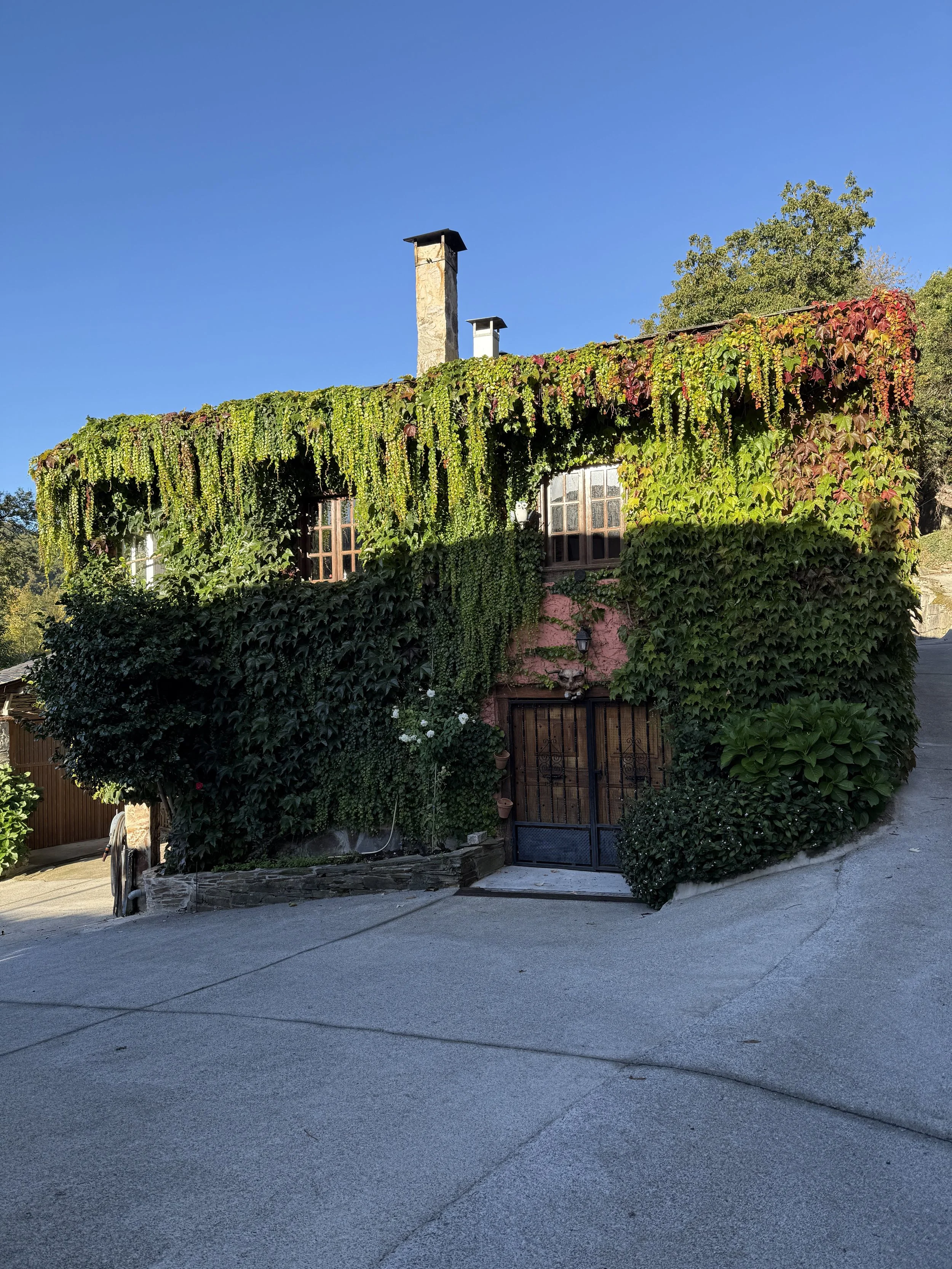Understanding Currency, ATMs, and Payments Along the Camino
The Currency Used Along the Camino
The Camino passes through several countries depending on your chosen route, but most pilgrims walk through Spain. Here’s what to expect:
Spain, France, and Portugal all use the Euro (€).
The Euro comes in both bills and coins:
Bills: €5, €10, €20, €50, €100
Coins: 1, 2, 5, 10, 20, 50 cents, plus €1 and €2 coins
Tip: Carry smaller bills and coins whenever possible. Many small albergues and cafés won’t have change for larger notes like €100.
Be sure to carry cash, as most vendors prefer it.
How Much Cash to Carry Daily
While credit cards are becoming more common along the Camino, cash is still king, especially in rural towns. I recommend keeping a modest amount of cash on hand each day for essentials like:
Café stops
Pilgrim menus at small restaurants
Donations at churches
Public albergue fees
Suggested Daily Cash Amount: €30–€50 per person
This usually covers food, basic lodging, and small extras. If you’re staying in private accommodations or dining at nicer restaurants, you may need a bit more.
Related post:Camino on a Budget: 10 Money-Saving Tips for Pilgrims
Using ATMs Along the Camino
ATMs (called “cajeros automáticos” in Spanish) are widely available in larger towns and cities along the Camino. Smaller villages may not have one, so plan ahead.
Tips for Using ATMs:
Withdraw in larger amounts to reduce transaction fees.
Use a debit card rather than a credit card to avoid cash advance fees.
Choose to be charged in euros, not your home currency if prompted—this usually gives you a better exchange rate.
Avoid independent ATMs in tourist areas that charge extra high fees. Stick with bank-branded machines like Santander, BBVA, or CaixaBank.
Let your bank know you’ll be traveling to avoid having your card blocked.
Pro Tip: I make it a habit to withdraw enough cash for about 4–5 days whenever I’m in a larger town like Pamplona, Burgos, or León.
A Country House along the Camino de Santiago
Cards and Digital Payments
The Camino is slowly becoming more digital-friendly, but don’t count on every place accepting cards, especially American Express.
When Cards Are Commonly Accepted:
Larger hotels and private albergues
Restaurants in bigger towns or cities
Some pharmacies and supermarkets
When Cash Is Still Required:
Small cafés and bars
Public albergues
Donation-based accommodations
Local markets or street vendors
Digital Wallets:
In some cities, you may be able to use Apple Pay or Google Pay, but this is not reliable in rural areas.
FOLLOW THE CAMINO CHRONICLES
FACEBOOK: THE CAMINO CHRONICLES
Exchanging Currency Before You Go
If you’re traveling from outside the Eurozone, you’ll need euros for your trip.
Best Options for Getting Euros:
Withdraw from ATMs in Spain or France upon arrival (usually the best rate).
Order a small amount of euros from your local bank before departure to have cash for your first day.
Avoid airport currency exchange kiosks if possible—they tend to have the worst rates and highest fees.
A small church in a Village along the Camino de Santiago
Safety Tips for Carrying Money
While the Camino is generally very safe, it’s always smart to take precautions with your money and valuables.
Use a money belt or neck pouch for your passport, cash, and cards.
Don’t keep all your money in one place—split it between a secure pouch and a wallet.
Withdraw cash during daylight hours and be discreet.
Carry only what you need for that day’s expenses.
Store valuables in a locker at private albergues or hotels when possible.
Tracking Your Spending
One of the easiest ways to overspend is to lose track of where your money goes each day. Here are some tools and tips:
Use a budgeting app like Trail Wallet or Mint.
Keep a small notebook to jot down expenses as you go.
Set a daily budget goal, such as €35–€50, and adjust if needed.
Sample Daily Camino Budget:
Category Budget Amount
Lodging €10–€15
Meals €20–€25
Miscellaneous €5–€10
Total €35–€50
Get Your Gifts and Gear Here
Internal Linking Suggestions
Encourage readers to explore other Camino Chronicles resources:
Camino on a Budget: 10 Money-Saving Tips for Pilgrims
How to Book Flights and Transportation for the Camino de Santiago
Budget vs. Luxury: How to Plan Your Camino Experience
You don’t need entertainment, when you have gorgeous scenery like this.
Common Payment Pitfalls to Avoid
Here are a few mistakes I’ve seen other pilgrims make—and how to avoid them:
Bringing only cash or only cards: Have both to be safe.
Withdrawing too frequently: Save on fees by taking out larger amounts.
Carrying too much cash: Risky in case of loss or theft.
Not having small change: Many small businesses don’t accept large bills.
Forgetting to notify your bank: This can lead to frozen cards at the worst time.
PRO TIP: Bring a Visa or MasterCard. American Express is rarely accepted.
Conclusion: Peace of Mind on Your Camino
Handling money while walking the Camino doesn’t have to be stressful. With a little planning, you can focus on your journey instead of worrying about payments or fees.
By carrying a balance of cash and cards, using ATMs wisely, and keeping safety in mind, you’ll be well-prepared for anything along the way.
When you reach Santiago de Compostela, the last thing you’ll remember is fumbling for change—it’ll be the friendships, experiences, and moments of reflection that matter most.
Call-to-Action:
For more practical tips on planning your Camino, follow @Camino.Chronicles and explore our guides to budgeting, packing, and preparing for this life-changing adventure.
Buen Camino,
Renae



